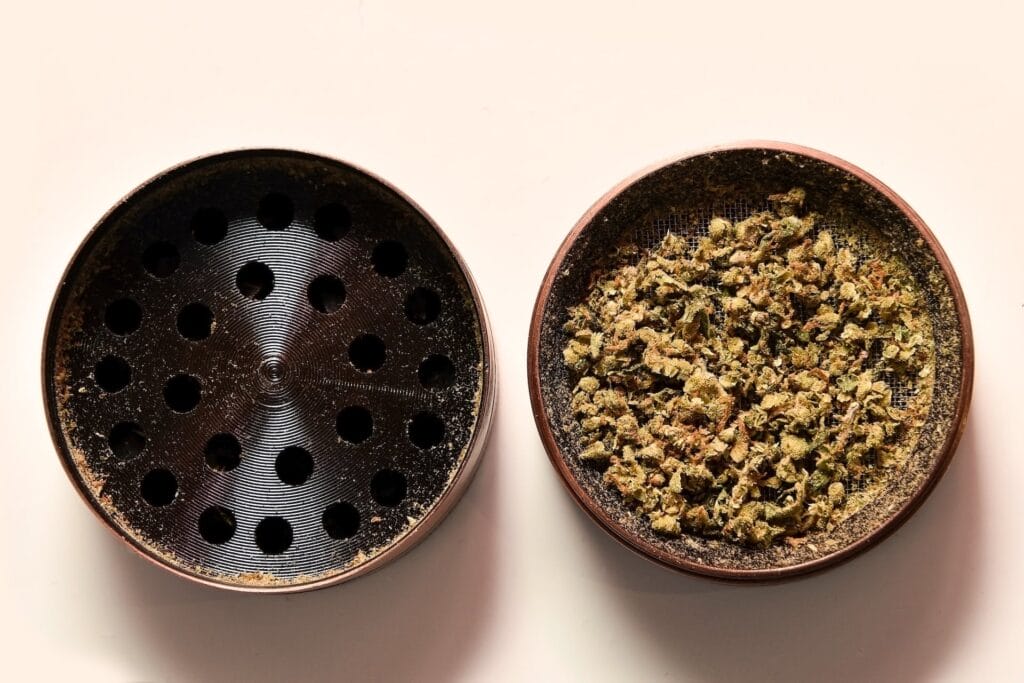Cannabis, known by various names, has long been appreciated for its diverse properties. One of the distinguishing features of all cannabis plants is the presence of multiple substances known as cannabinoids or phytocannabinoids.
Ongoing biomechanics research and investigations into the therapeutic effects of these compounds are driving the development of various applications for these plants and providing hope for individuals seeking relief from their symptoms.
Let’s delve deeper into the plant’s components and explore options for accessing cheap weed Canada if you wish to try its potential benefits.
Table of Contents
Key Takeaways:
- The cannabis plant comprises substances like cannabinoids, terpenes, and flavonoids.
- When the compounds within the cannabis plant interact harmoniously, they give rise to a fascinating phenomenon known as the entourage effect.
- Full-spectrum cannabis extracts can bring about more medical benefits as opposed to individual components of the plant.

The Cannabis Plants and Its Major Components
Cannabis, belonging to the Cannabaceae plant family alongside hops, is distinguished by the presence of secondary substances known as cannabinoids or phytocannabinoids. Over 150 cannabinoids are present alongside terpenoids, flavonoids, and alkaloids.
Cannabinoids
Cannabinoids are the naturally occurring compounds within the cannabis plant and are present primarily on flower buds. Referred to as phytocannabinoids due to their botanical source, they play a significant role in the plant’s composition. Among the myriad of phytocannabinoids, delta-9-tetrahydrocannabinol (THC) and cannabidiol (CBD) stand out as the most renowned and extensively researched.
| THC | CBD | OTHER CANNABINOIDS |
| The cannabinoid that causes the “high” sensation.This compound primarily interacts with the CB1 and CB2 receptors of the endocannabinoid system to cause the pharmacological and psychoactive effects linked with cannabis consumption. | Non-psychotropicIt operates in the body by impeding the enzyme responsible for suppressing anandamide.Anandamide is an endocannabinoid with significant influence over sleep patterns, anxiety, pain perception, and immune function. | Cannabigerol (CBG)Cannabichromene (CBC)Cannabinol (CBN)Delta-8-tetrahydrocannabinol (delta-8-THC)Delta-9-tetrahydrocannabivarin (THCV)Cannabivarin (CBV)Cannabidivarin (CBDV) |
Terpenes
Terpenes are aromatic compounds that contribute significantly to the flavour and aroma of the cannabis plant. They are not exclusive to cannabis; rather, they exist in various forms across nearly all plant life.
Within cannabis alone, there are more than 140 identified terpenes, each offering its own subtle nuances. Among these, some terpenes are unique to cannabis, further enhancing its sensory profile. B-myrcene stands out as the most abundant terpene within cannabis, trailed by trans-caryophyllene and a-pinene.
Flavonoids
Flavonoids are natural compounds abundant in fruits, vegetables, roots, flowers, tea, and wine, responsible for their vibrant hues. In cannabis, flavonoids play a role alongside terpenes and cannabinoids. They exhibit anti-inflammatory and neuroprotective properties, with specific compounds like apigenin showcasing anxiolytic and estrogenic traits, while cannaflavins A and B demonstrate potent anti-inflammatory capabilities.
Molecules Journal: Exploring the Combined Components of Cannabis and Its Impact on Therapeutic Benefits
According to an analysis by the advocacy group NORML, scientists have published an impressive volume of over 32,000 marijuana studies in the last decade. While the bulk of this research has traditionally delved into the effects of cannabis consumption, there’s been a notable tendency to sideline other components, such as cannabinoids, terpenes, and flavonoids. Much of the literature heavily centers on the major cannabinoids THC and CBD.
The journal Molecules explores the collaborative interactions among different chemical compounds found in marijuana. The argument presented underscores the significance of comprehending how these components work together and emphasizes that such insight is essential for fully grasping cannabis’s therapeutic potential.
Understanding the Significance of the Endocannabinoid System
The endocannabinoid system (ECS) regulates various physiological processes within the nervous system, and its dysregulation targets several pathological conditions. Therapeutic interventions targeting ECS activity have shown promise in managing neuroinflammation-related medical conditions. Comprising a complex network of receptors, the ECS also involves endocannabinoids derived from arachidonic acid, receptor ligands, and enzymes responsible for endocannabinoid metabolism.
The ECS, with its components including the endocannabinoids anandamide and 2-arachidonoylglycerol, as well as the enzymes responsible for their creation and breakdown, alongside the cannabinoid receptor type 1 (CB1) and type 2 (CB2), stands out as one of the most widely distributed signalling systems within the brain. Its influence extends to regulating various functions such as stress response, anxiety, memory, pain perception, and motivated behaviour. Endocannabinoid signalling is integral to the ongoing development, maturation, and refinement of neural circuits during adolescence.
The Entourage Effect of Cannabis Component within the ECS
The entourage effect is a phenomenon observed in pharmacology. It illustrates how interacting with co-existing metabolites can alter the properties of individual molecules, regardless of whether these metabolites possess inherent pharmacological activity.
Preclinical research published in Molecules Journal (2019) and Oncotarget Journal (2020) has shed light on the interplay between phytocannabinoids and terpenes. These studies indicate that the potential therapeutic advantages of full-spectrum cannabis extracts, as opposed to isolated compounds, may stem from what is termed the entourage effect.
Cannabinoids
Studies from the British Journal of Pharmacology and Multiple Sclerosis and Related Disorders have observed the suppressive effect of a combination of THC and CBD on neuroinflammation in animal models of multiple sclerosis. Phytocannabinoids display immunomodulatory and anti-inflammatory properties. For instance, when tested on LPS-activated microglial cells, THC and CBD demonstrated distinct mechanisms of action, with THC regulating the IFNβ pathway and CBD inhibiting the NF-κB-dependent pathway.
Terpenes
Cheng et al. (2014), in the Journal of Pharmacology, found that β-caryophyllene, a type of terpene, tends to bind to CB2R receptors. This could play a role in the combined effects of various phytochemicals in C. sativa by helping to alleviate neurotoxicity associated with Alzheimer’s disease (AD).
Myrcene’s capacity to enhance the transportation of delta-9-THC through the blood-brain barrier offers an intriguing pathway for developing AD therapeutics that can effectively reach the central nervous system.
Flavonoids
Flavonoids exhibit potential in addressing oxidative stress and neurodegeneration, thereby playing a role in enhancing the neuroprotective attributes associated with the entourage effect. A comprehensive review featured in the journal Frontiers in Aging Neuroscience underscored the neuroprotective benefits of diverse flavonoids. These compounds demonstrate the ability to mitigate neuroinflammation and diminish neurodegenerative mechanisms.
The Authors Take
Understanding the intricate interplay between cannabinoids, terpenes, and flavonoids is paramount for realizing the full therapeutic benefits of cannabis, as highlighted by the authors in their study. They also identify key evidence gaps that require immediate attention.
- Investigating the synergistic effects and underlying mechanisms of cannabinoids, terpenes, and flavonoids demands focused attention.
- Grasping the intricacies of cannabis phytochemical production and accumulation mechanisms, especially under varying lighting conditions, is essential for advancing medicinal applications.
- Comprehensive phytochemical characterization of cannabis strains, including their unique ratios of cannabinoids, terpenes, and flavonoids, holds promise for refining treatment strategies. Such efforts can lead to the development of more personalized and effective medicinal interventions.
Where to Buy Weed?
Interested in discovering the potential health advantages of cannabis but unsure of where to start? Mail-order marijuana services and same-day weed delivery offer convenient avenues to access cannabis products. These platforms provide a user-friendly website that allows you to peruse various marijuana products from the comfort of your own home.
Buying weed online not only grants you access to affordable options and promotional discounts to reduce costs but also enables you to discover the ideal high-quality cannabis products tailored to your preferences.
Conclusion
Cannabis harbours diverse compounds, each capable of exerting unique effects. The synergy among these compounds amplifies their therapeutic potential beyond initial expectations. Research, such as the study featured in the Molecules journal, provides valuable insights into the mechanisms of cannabis by emphasizing the significance of embracing full-spectrum products for symptom management in certain conditions. While further targeted studies are warranted, preliminary findings offer promising glimpses into possibility and understanding.
Frequently Asked Questions
How much does it cost to buy weed online in Canada?
The price of weed per gram is notably affordable in Canada in contrast to the rates in the US. In a physical marijuana dispensary, the range for a gram falls between $10 to $12, while an online dispensary often provides options starting at $2 per gram. A gram of cheap weed online can hover around $5 per gram for satisfactory quality, which falls within the AA+ to AAA grade range.
Can medical and recreational marijuana differ in price?
You can consume cannabis for medical or recreational purposes, and it’s worth noting that medical cannabis comes at a lower cost compared to recreational varieties. Medical cannabis expenses may qualify for tax deductions, and in some cases, insurance coverage might be available to offset costs.
Are other marijuana products as affordable as weed flower?
The cost of purchasing weed online is more economical compared to traditional sources. Alternative products like marijuana edibles, capsules, and oils have slightly higher prices, but they still stay within reasonable bounds. Online dispensaries strive to maintain competitive prices within the cannabis industry.
Is bulk weed cheaper than per gram?
Yes. When you purchase cannabis in bulk, you can enjoy discounts compared to buying per gram. Buying in bulk is particularly beneficial for those who frequently use cannabis or for medical reasons. Purchasing per gram allows you to experiment with its effects initially.
Does cheap weed mean low quality?
Price may play a role in assessing the quality of weed, yet its significance extends beyond mere affordability. While most assume that inexpensive weed equals inferior quality, this isn’t always true. For instance, it might denote a batch nearing its expiration date, so dispensaries offer it at a reduced price to ensure its timely sale. Evaluating weed solely based on price may overlook nuances contributing to its overall value and experience.
Related Articles:




